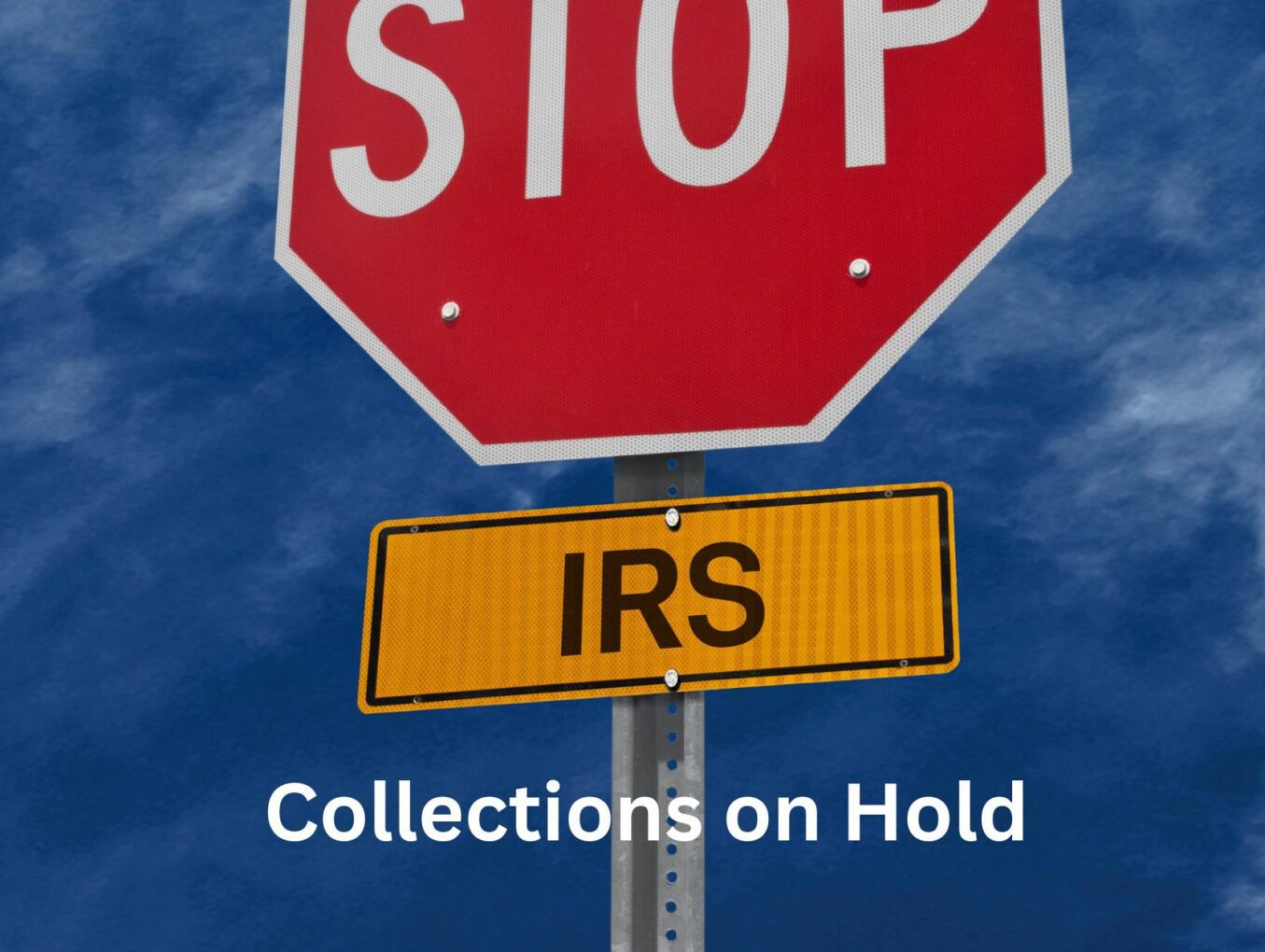Filing a tax return that shows you owe the IRS and failing to include full payment for the taxes starts the IRS “collection process.”
Before the IRS begins more aggressive collections, like a lien or levy, you will receive a series of balance due notices and information for tax relief options to help settle your tax debt.
In some situations, the IRS may put liens, levies, and other collections on hold while you work with them to resolve unpaid taxes. We will review specific situations that affect the collections process and timeline.
1. Applying for an Installment Agreement
You can pay off tax debt in monthly installments when you cannot make a lump sum payment. Once you apply for a payment plan, the IRS is “generally prohibited” from collections, including federal tax liens, wage garnishment, and bank levies.
Short-term payment plans allow you to take up to 180 days to pay. There are no set-up fees if you choose a short-term plan. If you do not owe the IRS much, this plan is good for not charging additional fees.
Installment agreements are long-term payment plans that give you up to 72 months (six years) to pay off taxes. However, unlike short-term plans, the IRS charges set-up fees up to $225 for installment agreements.
In most cases, individual taxpayers who owe less than $50,000 including penalties and interest are eligible for long-term installment agreements. Businesses with less than $25,000 in payroll taxes can also apply for an installment agreement.
2. Submitting an Offer
The Offer in Compromise (OIC) program allows you to settle your IRS debt for a fraction of what you owe.
Whether you submit a lump sum or periodic payment OIC, the IRS suspends the collection process, and you will not have to worry about liens or levies as long as you make your OIC payments on time.
3. Requesting Currently Not Collectible Status
If you receive government assistance, such as Social Security or disability, or you rely solely on unemployment benefits for income, the IRS may grant you Currently Not Collectible (CNC) status.
CNC does not settle your tax debt but temporarily stops IRS collections. The IRS will review your finances from time to time to determine when you can make tax payments and do not need CNC.
To prove financial hardship for CNC, you will need to submit Form 433 and include copies of bank and other income statements, government assistance, rent and car payments, utility bills, and medical bills.
As mentioned above, Currently Not Collectible status does not mean the IRS forgives your tax debt. They will ask for regular updates on changes to your financial situation. When your finances improve, they will expect you to start paying off your tax debt.
4. Filing Bankruptcy
If you have a bankruptcy case, creditors and the IRS may stop collecting debts until the end of your case or the court allows them to collect for cause.
The IRS can resume collections once the bankruptcy case ends unless the tax debt has been paid in full or was formally discharged.
5. Collection Due Process (CDP) Hearing, Innocent Spouse Relief, and Living Outside the U.S.
Requesting a CDP hearing because you do not think the IRS assessment of your tax debt is accurate or fair regarding collection practices is another way to suspend collections.
Keep in mind that if you receive a notice of federal tax lien or notice of intent to levy, you must request a hearing within 30 days.
If you can prove your spouse or ex-spouse is solely responsible for the tax debt, you can also request Innocent Spouse Relief to stop collections or put them on hold.
You will need to file Form 8857 to request relief. It can take the IRS up to six months to review your case, and you are on the hook for taxes during that time.
The IRS generally has ten years from when your tax was assessed to collect total taxes, penalties, and interest owed. If you are out of the U.S. continuously for six or more months, the IRS suspends your CSED.
Need more help? You can start online by answering 6 simple questions.
6 Simple Questions. Free Evaluation.

